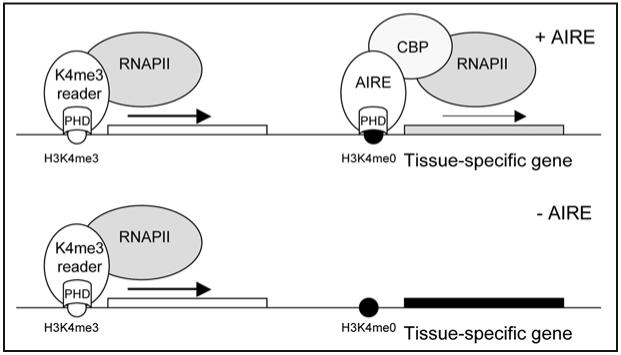Figure 3.

Schematic view of proposed AIRE function in regulation of tissue-specific gene expression in thymic medullary epithelial cells. The majority of active genes are activated by proteins that have PHD domain that reads H3K4me3 modification (left). AIRE is able to activate genes, which have H3K4me0 modifications and are normally silent or are expressed at low levels (right). Tissue-specific genes have high expression level and trimethylation of H3K4 mark in the corresponding tissues. Outside of their corresponding tissues, these genes have low methylation level of H3K4 and are silenced. In thymic medullary epithelial cells (+AIRE), AIRE is sufficient to increase the expression of multiple tissue-specific genes through the interaction with CBP and/or elongational factors. In AIRE deficient thymus (-AIRE), such as in APECED patients, tissue-specific genes are not expressed and are not presented as self-antigens to developing T cells.
